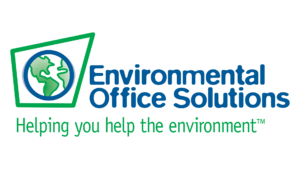Project demonstrates a circular economy for hard disk drives
<![CDATA[
The International Electronics Manufacturing Initiative (iNEMI), Morrisville, North Carolina, has announced the publication of a report by the consortium’s Value Recovery from Used Electronics project participants describing how the project successfully used end-of-life hard disk drives (HDDs) to demonstrate a viable process toward the development of a multistakeholder circular economy.
Project activities focused on three areas:
- Construction of a set of decision trees to identify the options (pathways) at each step in the value recovery chain in the context of a circular economy and what information each of the stakeholders needs to pursue higher value recovery along a given pathway.
- Development of economic models, life cycle assessments and logistics models to determine which value recovery options generate the highest value/profit by type and size of drive. These models provide the basis for business decision-making by the stakeholders, individually and collectively, as part of supply chains.
- Demonstration projects to prove the efficacy of major critical-to-market circular economy pathways. The demonstration teams were able to successfully reuse magnet assemblies, recover intact magnets for non-HDD use, make magnets from magnets and shred, make rare earth element (REE) oxides from HDD magnets and develop business models that would allow functioning HDDs to be reused/resold after secure, verifiable, economically viable data wiping.
“This report represents a significant body of work,” says Marc Benowitz, CEO of iNEMI. “It details the well-coordinated efforts of organizations from across the electronics supply chain that worked together on a practical application of circular economy concepts for electronics. These electronics manufacturing companies, national labs, universities and research institutes were able to successfully demonstrate that a circular economy can be a reality for used electronic products. We recognize the many contributions from the individuals and organizations involved in this effort and thank them for helping achieve such meaningful results.”
The Value Recovery project was organized explicitly using the Ostrom Framework as a self-managing, sustainable system. The project team went beyond the theoretical in demonstrating major value recovery pathways for used HDDs in a circular economy, iNEMI says in a news release announcing the results of the project. “This systems approach has never been done before and, as far as the team knows, the Ostrom Framework has never been used to design a multistakeholder system for self-managing and creating value from a man-made common pool resource—in this case, HDDs,” iNEMI adds.
“A major emphasis of this work was going beyond theory to identify existing economic and technology challenges to achieving sustained circularity,” says Bill Olson, formerly with Seagate Technology and co-leader of the Value Recovery project. “In areas where we identified gaps, we worked to bridge those gaps via demonstrations. Our multistakeholder teams’ demonstrations overcame gaps by applying existing technology in new ways, developing new technologies or capturing existing but as yet unrecovered value to achieve sustainable supply via the Ostrom Framework.”
These demonstration projects proved the effectiveness of multiple recovery pathways for reusing HDDs, including business models needed to securely destroy data so that functioning hard disk drives can be sold to new users, iNEMI says.
“The most ambitious goal of the project team was true circularity at the highest possible value—making hard drives from hard drives,” says Carol Handwerker, professor of materials engineering and environmental and ecological engineering at Purdue University and co-leader of the Value Recovery project. “The team was able to accomplish this goal, as well as create all the other value recovery pathways needed to make a circular HDD life cycle a reality.”
“Today, almost all of the value of HDDs is lost by shredding them into mixed aluminum scrap sold at 25 cents per pound,” Handwerker adds. “This is in contrast to the significantly higher value recovery that this iNEMI project demonstrated is possible, from HDD and component reuse to recovery of REEs as magnet powders, oxides or metals to turn them back into RE magnets. Establishing that all of these pathways can be realized economically, logistically and with lower environmental impact is a significant accomplishment.”
Stakeholders who participated in the Phase 2 project included representatives from Ames Laboratory, Momentum Technologies, Cascade Asset Management, Oak Ridge National Laboratory, Cisco, Purdue University, Critical Materials Institute, Rifer Environmental, Echo Environmental, Seagate Technology, Geodis, Teleplan, Google, University of Arizona, Idaho National Laboratory, Urban Mining Co. and Microsoft.
]]>
Source: Recycling Today
Project demonstrates a circular economy for hard disk drives
<


